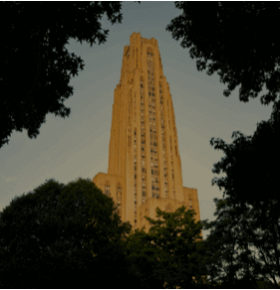
Subscribe to Pittwire Today
Get the most interesting and important stories from the University of Pittsburgh.When it comes to assistive technology, one size does not fit all. Just ask Dan Ding, associate professor and vice chair for research and translation in the Department of Rehabilitation Science and Technology in the School of Health and Rehabilitation Sciences.
“People with disabilities want to participate in their community,” said Ding. “As rehabilitation scientists, we can help make that happen. We develop and evaluate tech-based solutions by assessing each individual’s unique abilities, digital skills and other contextual factors such as home environment.”
As director of Pitt’s Wireless Rehabilitation Engineering Research Center, Ding leads an interdisciplinary team that empowers people with disabilities to embrace existing wireless technology to take control of their lives. “It’s all about providing access,” Ding said.
Individuals with total paralysis can also enjoy more independence through Ding’s latest endeavor, the SmartTech Implementation Hub for Paralysis Care. The hub, which leverages sensors, data analytics, connectivity, artificial intelligence and other smart technology features, will serve as a national resource center to support smart technology implementation for paralysis care.
Read on for more examples of Pitt researchers who are leveraging assistive technologies to improve access from the Office of the Senior Vice Chancellor for Research’s 2024 Annual Report.
Meet more impactful innovators
Browse the report website to explore stories that highlight the people behind Pitt’s research enterprise, which reached $1.2 billion in 2024.
Putting technology to work
When people lose their vision, the risk of losing their independence is a major concern. José-Alain Sahel (pictured), Distinguished Professor and The Eye and Ear Foundation Endowed Chair of the Department of Ophthalmology in the School of Medicine, is devoted to helping them keep or recover both using a driving simulator to mimic the impact of low vision on driving.
“We are exploring the abilities of patients to direct their attention toward objects that are moving in the periphery. And then we have this driving simulator, which mimics the condition of driving in real life,” said Sahel, who also directs the UPMC Vision Institute.
The team’s goal is to make patients aware if they are ignoring important parts of the scene and alert them that this could be dangerous for them and for others. The lab scores the impact of visual impairment on motor performance, measuring and quantifying the interactions between seeing and acting — between action and vision.
“Because there are only two platforms like that in the world, the one in Paris and one in Pittsburgh, and because we wanted to be able to apply that across many centers, we developed a virtual reality system, which will be available in dozens of settings,” said Sahel.
For more than 30 years, Rory Cooper and his team have harnessed the power of technology to transform the design, construction and utilization of power and manual wheelchairs and other mobility and manipulation devices. The result: 30 U.S. patents awarded or pending, two textbooks, more than 400 peer-reviewed articles and countless lives changed for the better.
“People often talk about the research for a cure for various disabilities,” said Cooper, a distinguished professor of rehabilitation science and technology and founder of the Human Engineering Research Laboratories (HERL), a joint effort of the University of Pittsburgh and the U.S. Department of Veterans Affairs. “But for many of us, technology is really the cure.”
Utilizing cloud computing, artificial intelligence, sensor fusion and other innovations, Cooper and his team at HERL have embarked on new ventures that will further support inclusivity. Through a new center, the team is developing ways to make electric vehicles and commercial airlines more accessible, and another center aims to craft new technology and training to increase participation of people with disabilities in recreational exercise.
“Recreation helps maintain our spiritual, physical and emotional health,” said Cooper, who has been a wheelchair user since an accident in 1980 left him paralyzed from the waist down. “Through this kind of research, recreation will be possible for everyone, especially people with disabilities.”
Photography by Aimee Obidzinski


